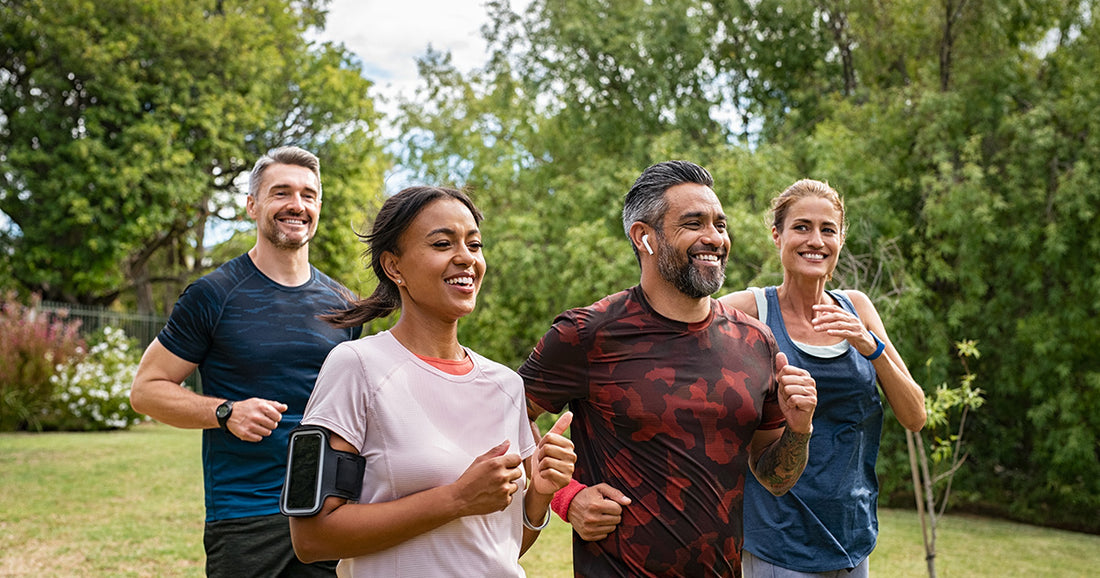
Empowering Exercise Routines for Individuals with Incontinence
Share
Living with incontinence can present unique challenges, but it should never hinder individuals from maintaining an active and fulfilling lifestyle. In this blog post, we will explore empowering exercise routines for individuals with incontinence that promote physical fitness and overall well-being while effectively managing incontinence. We'll delve into various low-impact exercises that are gentle on the bladder and pelvic floor muscles, providing a foundation for building strength and confidence. Additionally, we'll offer guidance on modifying high-impact exercises to reduce the risk of leakage and discomfort. Let's discover the importance of staying active and provide motivational tips to overcome any insecurities related to incontinence during physical activities.
Understanding the Importance of Staying Active with Incontinence
Regular physical activity plays a crucial role in maintaining overall health and well-being. For individuals managing incontinence, engaging in exercise is equally essential. Staying active not only promotes cardiovascular health, muscle strength, and flexibility but also helps to manage weight, reduce stress, and improve mood. Exercise releases endorphins, the "feel-good" hormones that contribute to a sense of well-being and happiness. When approached with the right mindset and awareness of individual limitations, exercise can become an empowering tool for individuals with incontinence to enhance their quality of life.
Moreover, exercise can also benefit bladder health. By strengthening the pelvic floor muscles and improving overall fitness, individuals may experience improved bladder control and a reduced risk of leakage. Exercise can also promote better bowel regularity, reducing the risk of fecal incontinence. Engaging in regular physical activity can create a positive cycle of improved physical and emotional well-being, enhancing the management of incontinence symptoms.
Exploring Low-Impact Exercises for Individuals with Incontinence
Low-impact exercises offer a myriad of benefits for individuals managing incontinence. They are not only gentle on the body but also highly effective in promoting overall physical well-being. These exercises minimize stress on the pelvic floor muscles, which are vital for maintaining bladder control. By reducing the pressure on these muscles, low-impact exercises help to alleviate discomfort and the risk of urinary leakage during physical activities. Some excellent low-impact exercises to consider include:
Walking
Walking is a simple yet effective form of exercise that can be easily incorporated into daily routines. It provides cardiovascular benefits without putting undue pressure on the bladder. Consider taking brisk walks in the park or around the neighborhood to enjoy nature and fresh air while staying active.
Swimming
Swimming is a whole-body workout that provides resistance and cardiovascular benefits. The buoyancy of water also reduces the impact on joints and pelvic muscles, making it an excellent choice for individuals with incontinence. Whether swimming laps or participating in water aerobics, the pool can be a refreshing and enjoyable place to exercise.
Yoga
Yoga focuses on gentle movements, stretching, and breathwork, promoting flexibility, balance, and relaxation. Certain yoga poses can also strengthen the pelvic floor muscles, supporting continence. Consider attending yoga classes specifically designed for individuals with incontinence to ensure that exercises are tailored to individual needs.
Cycling
Cycling on a stationary bike or a recumbent bike is a low-impact alternative to traditional cycling. It provides an excellent cardiovascular workout while minimizing pressure on the pelvic region. Biking can be a fun and social activity that allows individuals to explore new places or enjoy the company of friends and family.
Modifying High-Impact Exercises for Incontinence Management
While some high-impact exercises may initially pose challenges for individuals with incontinence, it's important to remember that many of these activities can be modified to reduce the risk of bladder leakage. By making simple adjustments and being attentive to your body's signals, you can create a workout routine that is both enjoyable and leak-free. Here are some tips for modifying high-impact exercises:
Manage Intensity
Reduce the intensity and duration of high-impact exercises to minimize pressure on the bladder and pelvic floor muscles. For example, consider shorter intervals of high-impact exercises, followed by periods of low-impact movements or rest.
Incorporate Rest Periods
Allow sufficient rest periods during workouts to give the body time to recover and reduce the risk of bladder leakage. Take breaks as needed, and remember that it's okay to pace yourself.
Perform Kegel Exercises
Strengthening the pelvic floor muscles through Kegel exercises can enhance bladder control and support high-impact activities. Kegels involve contracting and relaxing the muscles used to control urination. By incorporating Kegel exercises into a regular exercise routine, individuals can improve bladder control and reduce the risk of leakage during physical activities.
Wear Absorbent Protection
Consider using absorbent pads or incontinence products designed for physical activities to manage potential leaks. Wearing protective products can provide confidence and peace of mind during workouts, allowing individuals to focus on staying active without worry.
The Importance of Emotional Support and Motivation
Dealing with incontinence may lead to feelings of insecurity or embarrassment, but it is crucial to remember that exercise is for everyone, regardless of health conditions. Finding emotional support and motivation can be incredibly empowering when embarking on an exercise journey. Remember, exercise is not about perfection or comparison; it's about taking a step towards better health and well-being, and everyone, regardless of health conditions, deserves to enjoy the benefits of staying active. Here are some strategies to stay motivated:
Seek Support Communities
Engage with individuals or groups that understand the challenges of managing incontinence while staying active. Sharing experiences and tips can provide valuable encouragement. Online forums and support groups focused on exercise and incontinence can be excellent resources for finding like-minded individuals.
Set Realistic Goals
Establish achievable fitness goals and celebrate each milestone, no matter how small. Progress is a journey, and every step forward counts. Remember that it's okay to start slowly and gradually increase the intensity and duration of workouts.
Embrace Positivity
Focus on the benefits of exercise and how it contributes to overall well-being. Embrace positive affirmations and thoughts to stay motivated. Remind yourself of the progress you've made and the positive impact exercise has on your physical and emotional health.
Find Exercise Partners
Exercising with friends, family members, or a supportive exercise group can provide encouragement and motivation. Sharing your fitness journey with others who understand and empathize with your situation can be empowering.
The Impact of Exercise Routines For Individuals with Incontinence
In conclusion, empowering exercise routines are essential for individuals managing incontinence. By understanding the significance of staying active, exploring low-impact exercises, modifying high-impact activities, and finding emotional support, individuals with incontinence can confidently embrace exercise as a means to enhance their physical and emotional well-being. Through mindful choices and personalized approaches, they can break free from limitations, build strength, and enjoy a life filled with vitality and empowerment. By empowering themselves with exercise, individuals with incontinence can improve bladder and bowel control, boost self-confidence, and lead a fulfilling and active life.
